We’ve all heard it: Retinol is a miracle worker of anti-aging, and we see it on the ingredient list in products ranging from cheap drugstore brands to luxury spa products to mass-market chains, dermatologists offices, and all the way to the cosmetic counters at Barneys, Neiman Marcus and Bergdorfs. What accounts for the differences in efficacy and price? Two factors: the strength of the Retinol and the products other supporting ingredients such as Vitamin C, Hyaluronic Acid, or Jojoba. These Most Valuable Players of skincare are the real test of how well any given Retinol will work for you and if it is worth its’ price. Let’s take a closer look at some of the ingredients you do – and don’t – want to see on a Retinol’s ingredient label.
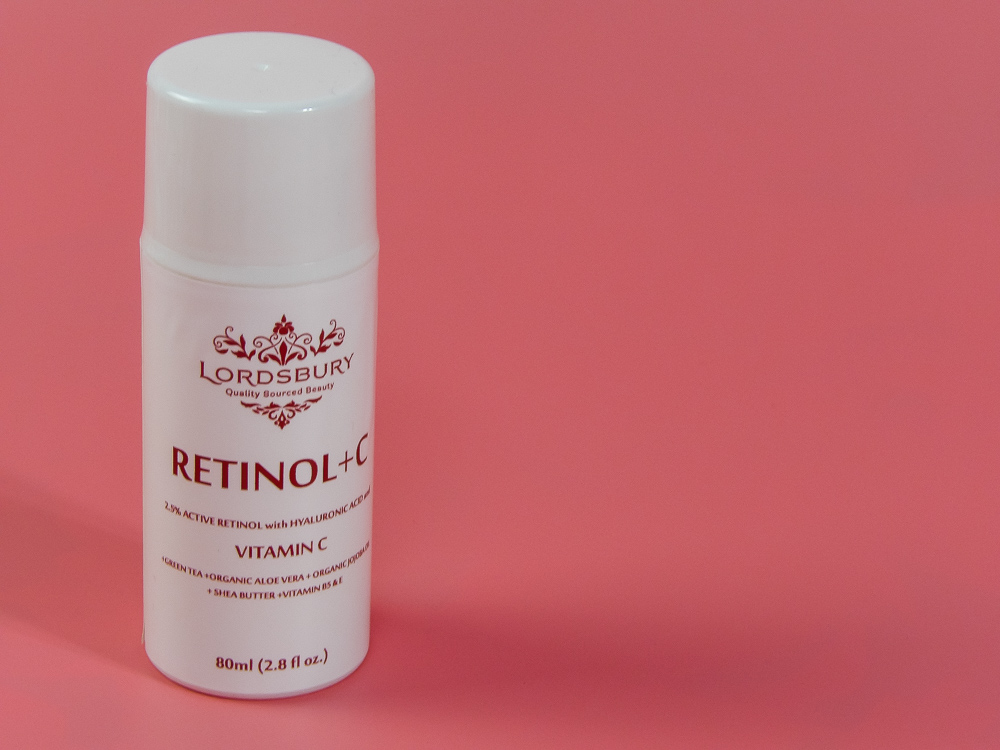
Lordsbury Retinol+C Cream Moisturizer contains 2.5% Pure Retinol, 20% Vitamin C, Hyaluronic Acid, Jojoba, Wildcrafted Green Tea, Shea Butter and many other Retinol enhancing ingredients
ALL-IN-ONE RETINOL
Let’s cut to the chase: Is there a Retinol that combines ALL of the good Retinol ingredient pairings? Yes. For an all-in-one Retinol product, we find Lordsbury Retinol+C Cream Moisturizer to be a highly effective combination of ingredients to best support the many skincare benefits of a good Retinol. It combines a prescription strength 2.5% Retinol with 20% Vitamin C Serum, Hyaluronic Acid, along with multiple buffering moisturizers including nourishing Jojoba Oil, calming anti-oxidant Wildcrafted Green Tea, calming Aloe Vera, Shea Butter, Cocoa Butter and many more.
How does each of these ingredients work in tandem with Retinol to increase its’ overall efficacy? Here are some details about these key player ingredients.
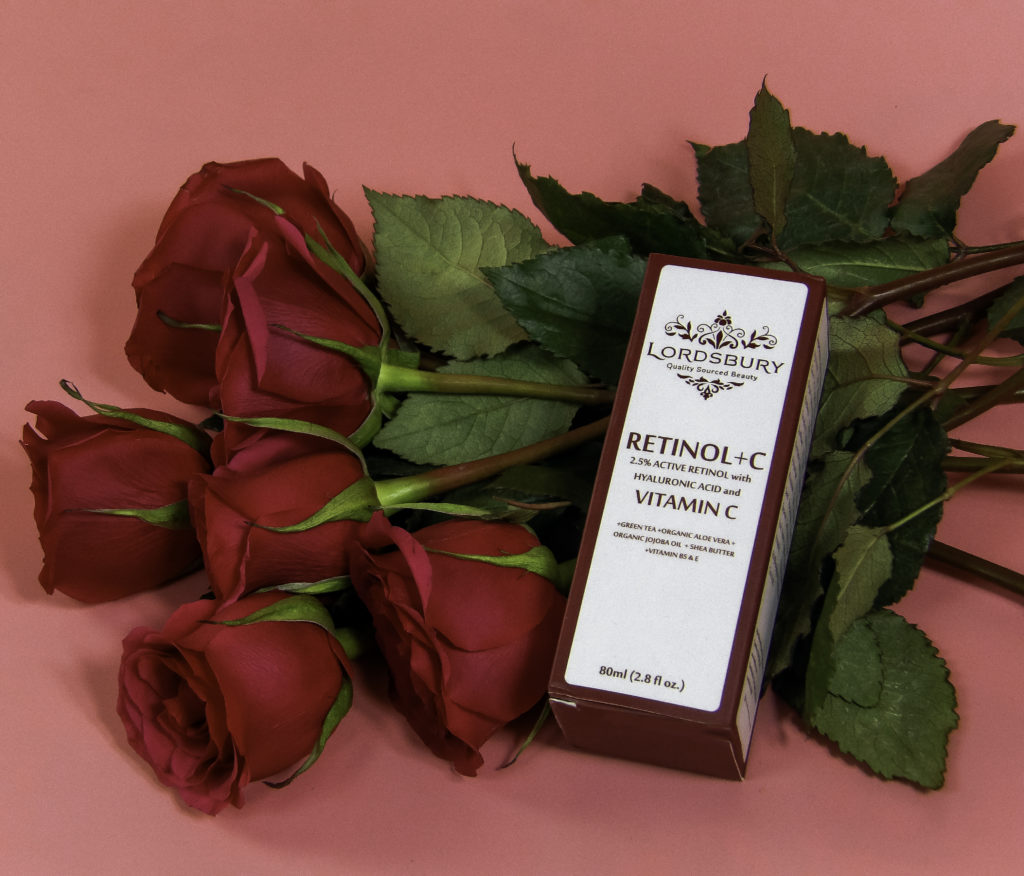
Lordsbury Retinol+C Cream Moisturizer comes in a generous 2.8-ounce container
RETINOL
It seems obvious, but there should be a respectable amount of Retinol in your Retinol product. Prescription levels begin at about 2.5% up to 5%, although some prescriptions are low as 1%. About 2% and up is needed for a Retinol to be effective, but not all Retinol products contain very much Retinol.
VITAMIN C
Vitamin C Serum is Retinol’s BFF, a partner in crime, and all around pal. Vitamin C works in tandem with Retinol to accomplish the same thing but in different ways.
For example, where Retinol refines surface skin texture, Vitamin C builds collagen to strengthen and support the skin so it is as strong as it looks. Retinol fights acne by cleaning out pores and eradicating bacteria-trapping dead skin, Vitamin C reduces acne inflammation and fades post-pimple scarring. Both Retinol and Vitamin C promote collagen, but each is involved at different stages in the collagen production process. Together, they ensure the maximum amount of collagen is produced.

Vitamin C can build collagen even around the delicate eye area
These reasons are why applying Vitamin C and Retinol daily is considered the best anti-aging topical program.
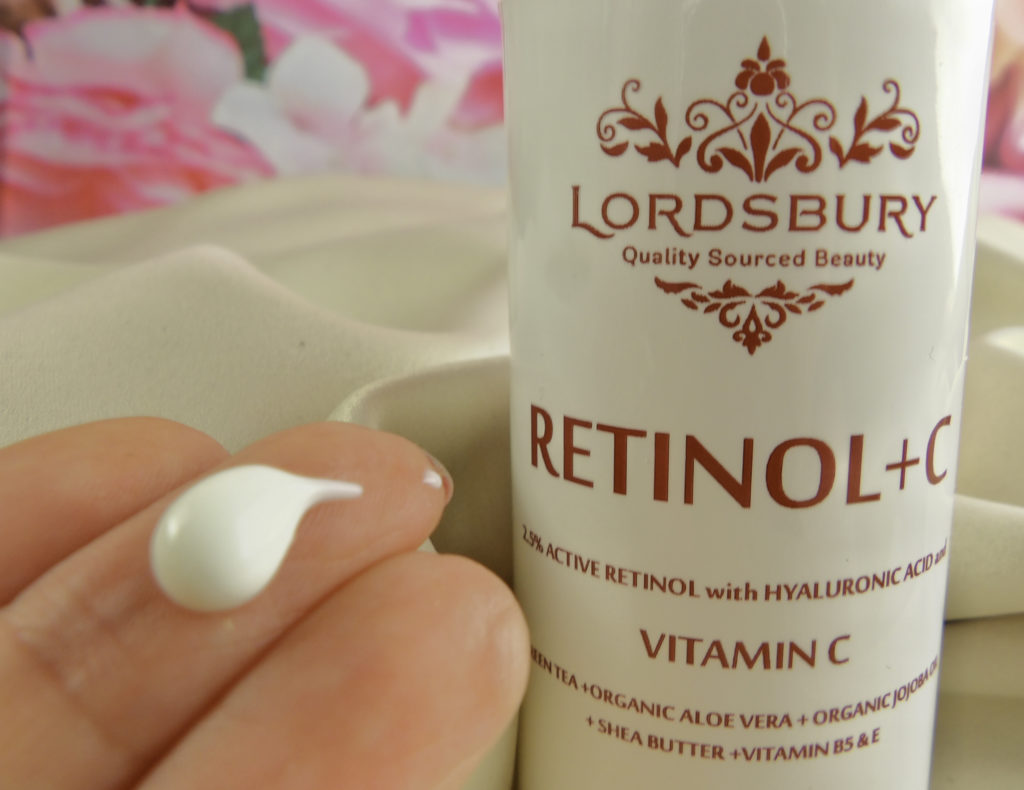
Just one pump of Lordsbury Retinol+C Cream Moisturizer treats the face and throat
HYALURONIC ACID
If you have old acne scars or sun damage and had to pick only one other ingredient for an active ingredient product with Retinol, it would likely be Hyaluronic Acid. Hyaluronic Acid is like your friend with VIP access. First, Hyaluronic Acid holds massive amounts of moisture to plump out wrinkles and fine lines while making skin look dewy and young. But more importantly, Hyaluronic Acid also can pull active ingredients deeper into the skin, including Retinol. The deeper these ingredients get, the better the supporting collagen structure becomes, and even older and darker scars fade.
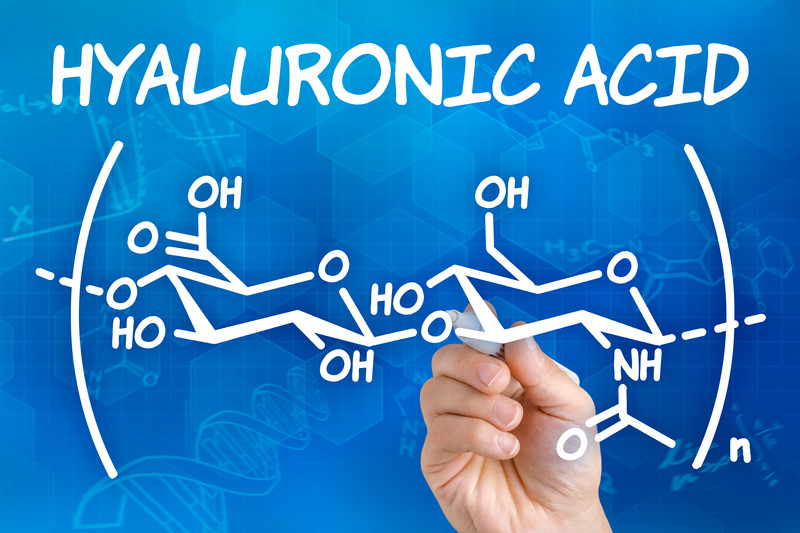
Hyaluronic Acid makes skin instantly dewy and soft, it plumps wrinkles and helps Retinol sink deeper into skin to address deep wrinkles, scars, and discoloration
Many treating active ingredients, including Retinol and Vitamin C, have molecules that are too large to permeate these skin layers, but somehow, Hyaluronic Acid can bind with Retinol and bring the Retinol into deep skin layers it could not access alone.
What does all this mean? If you have deep scars, wrinkles, discoloration, sun damage, sagging, or stubborn cystic acne, a Retinol product containing Hyaluronic Acid can assist Retinol to treat those deep skin level problems. When Hyaluronic Acid helps Retinol sink into the deeper skin layers, it helps eradicate uneven skin texture and tone, including sun damage and deep scars.
Buffering Agent Moisturizers
It may seem counter-intuitive, but one must buffer Retinol with a gentle, soothing moisturizer, ingredients like Green Tea, Jojoba, or Aloe Vera. Here is why:
For all that Retinol can do, it can also give a pretty nasty accidentally, haphazard self-imposed chemical peel, and the results are not pretty. It’s easy to give oneself an accidental Retinol chemical peel, because skin starts looking so good, that one might feel applying “more is better”, which works for a few days, until suddenly it doesn’t, and your face goes from looking dewy and younger to looking like a bad sunburn.
Even if you follow the directions and only use the prescribed amount of Retinol, skin becomes more sensitive to Retinol after about two weeks, because the old skin is sloughed off, and the new skin is more delicate, yet the same level of Retinol is being applied to skin that isn’t ready to exfoliate yet. This leads to redness and irritation.
HOW TO NOT BURN YOUR SKIN WITH RETINOL
The key to avoiding burning yourself with Retinols, prescription or over the counter, is buffering. To buffer either apply moisturizer first (if you’re very sensitive) or after applying Retinol, and don’t skimp. Buffering allows for the maximum frequency of Retinol use per week. If you still can’t tolerate the peeling and dry skin, apply Retinol for twenty minutes to an hour, then wash it off before bed. This way you at least get some Retinol benefits.
But ideally, your Retinol product comes with built-in buffering moisturizers. We like Lordsbury Retinol+C Cream Moisturizer because it is SO emollient without being greasy. In fact, it’s gentle enough to use twice a day without redness, irritation or dry, flaky peeling.
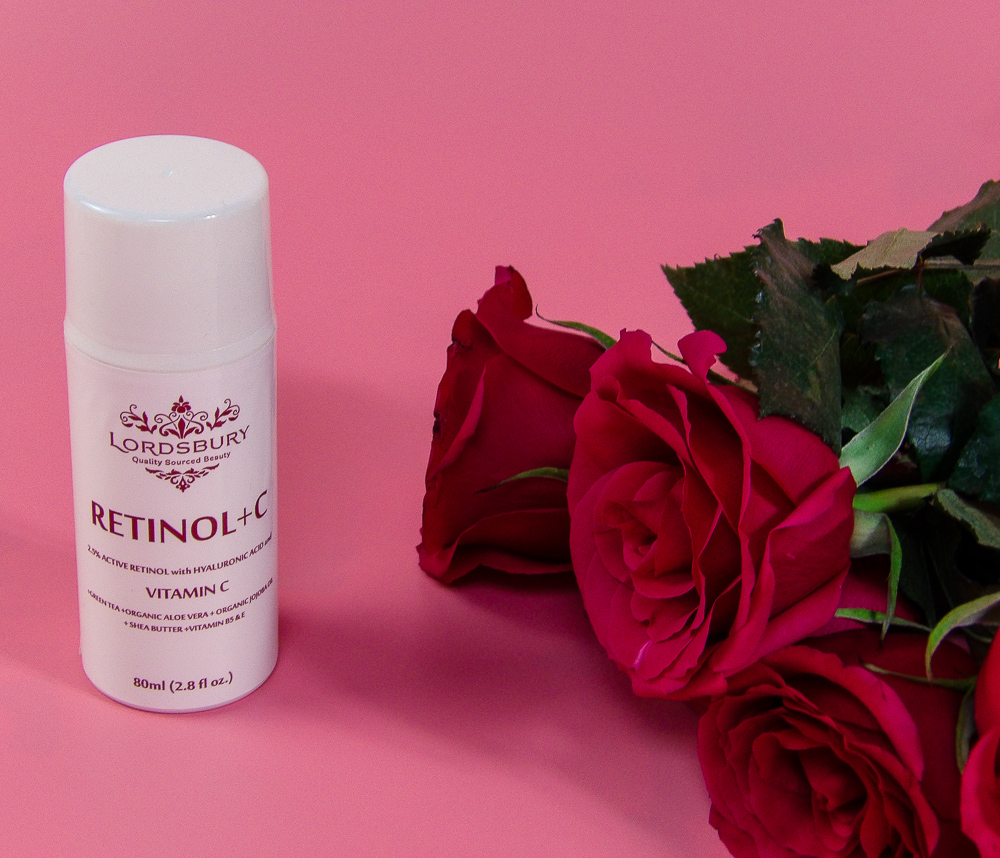
The moisturizing ingredients make Lordsbury Retinol+C Cream Moisturizer gentle enough to use everyday
Lordsbury Retinol+C Cream Moisturizer contains quality, organic, soothing, nourishing moisturizers including:
- Wildcrafted Green Tea feeds and moisturizes the skin, calms irritation and is an excellent antioxidant. Green Tea can calm the irritation that Retinol causes
- Jojoba Oil is very similar to the composition of our natural skin oils, so skin tends to absorb Jojoba very well. As a carrier oil, it enhances the ingredients it is paired with instead of creating a barrier. Made of 98% monounsaturated fats so it can penetrate deeply. Jojoba has a very similar structure to sebum, replacing the natural oils the skin needs to stay healthy and gives skin elasticity and softness
- Aloe Vera is best known for burn treatment on the skin, but it is highly nutritious to skin with numerous vitamins that the skin can use topically to enhance cell turnover and repair skin cells.
- Shea Butter can be tricky in some products, as inorganic Shea Butters can tend to make skin breakout. Because of this, you may have had a bad experience with Shea, which is unfortunate since it can both feed the skin and overhaul the skin texture, even on deep burns. If you’re going to apply a product with Retinol, make sure the Shea Butter is organic, such as is found in Lordsbury Retinol+C Cream Moisturizer.
- Cocoa Butter has long been used for stretch marks because it helps skin remain resilient and elastic. Retinol is also excellent for stretch marks, whether they are in the new “red” stage or older “white” stage. If you’re interested in Retinol for stretch mark repair, Cocoa Butter is an excellent pairing.
- Vitamin B5 helps soothe and regenerate skin.
- Vitamin E softens rough skin patches including scars. Retinol refines the texture and fades scarring, while Vitamin E makes the skin more pliable.
- Organic Sunflower Oil softens the skin and is an excellent carrier oil. It works well with Retinol because it is so hydrating to the skin and can calm red, irritated skin when other products cannot be tolerated.
- Propolis is a bee product, it fights infections and heals wounds. It allows for an aggressive Retinol and Vitamin C cell renewal program without skin becoming too red, irritated, flaky or raw. Some Retinol programs leave skin dry and peeling; the Propolis helps keep skin at its’ best. If you are allergic to bee products, take note.
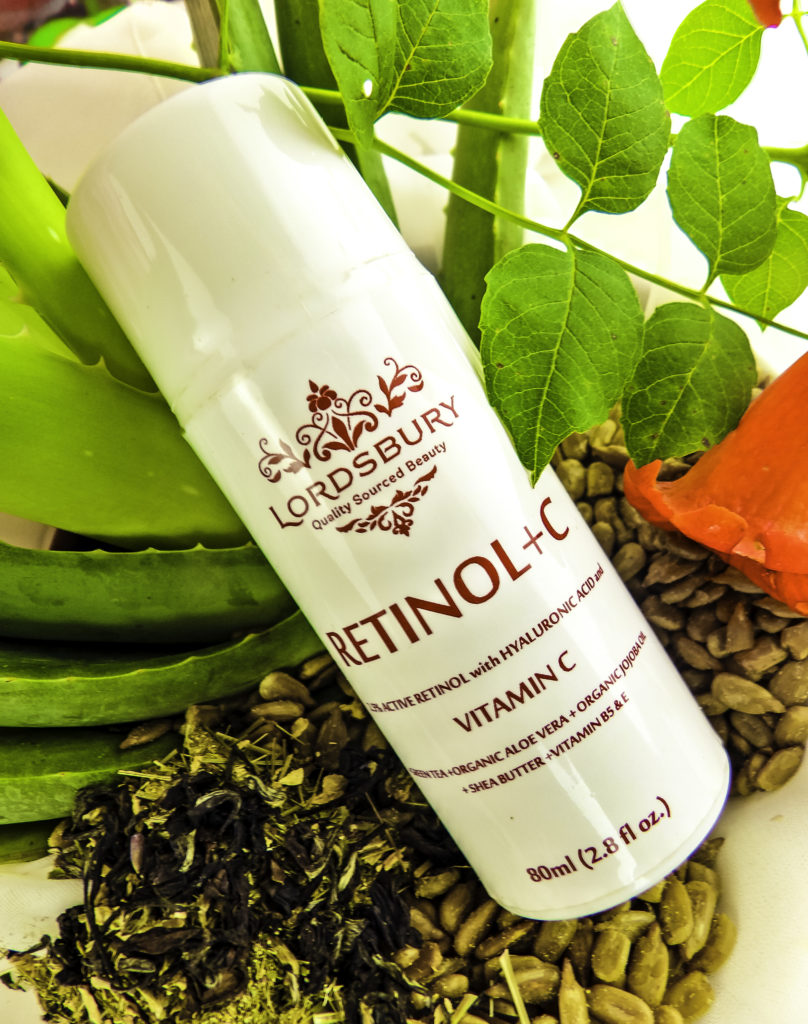
Lordsbury Retinol+C Moisturizer contains buffering moisturizers built right in like Aloe Vera, Green Tea, Sunflower Oil, Jojoba and Vitamin E
With a line up of moisturizing buffering ingredients like that, you can see why we use Lordsbury Retinol+C Cream Moisturizer. It is gentle enough to use twice a day without any irritation, even on delicate skin. That is an impressive amount of moisturizing ingredients!
CONCLUSION
There you have it, some of our favorite ingredients for boosting the efficacy of a Retinol product. Pairing Vitamin C helps Retinol do its’ job best, Hyaluronic helps Retinol reach the deeper skin layers to fight sagging, build collagen, and fade deeper scars. Moisturizing ingredients that do not cause breakouts are vital to tolerate any Retinol program. The long list of high-quality moisturizing agents in Lordsbury Retinol+C Cream Moisturizer, paired with prescription strength Retinol and 20% Vitamin C makes it an ideal all-in-one product for your Retinol needs.
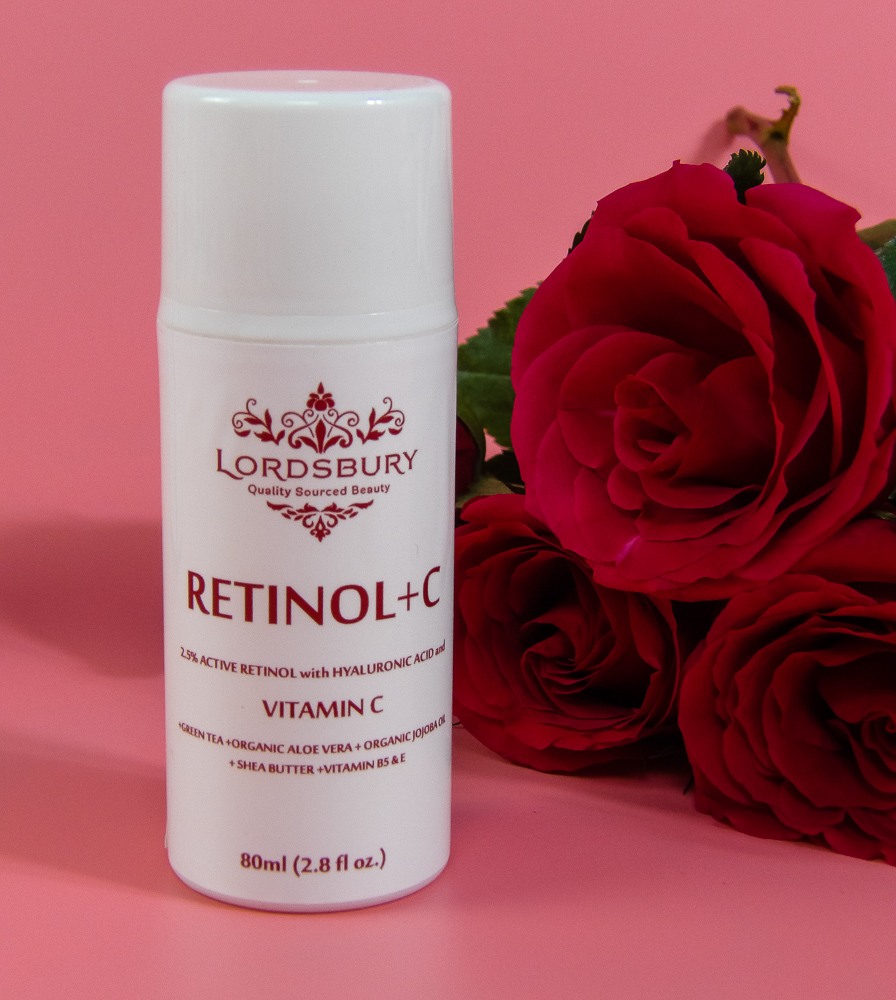
WHERE TO BUY IT
Find Lordsbury Retinol+C Cream Moisturizer at Amazon: https://www.amazon.com/dp/B01M3PSEQX/
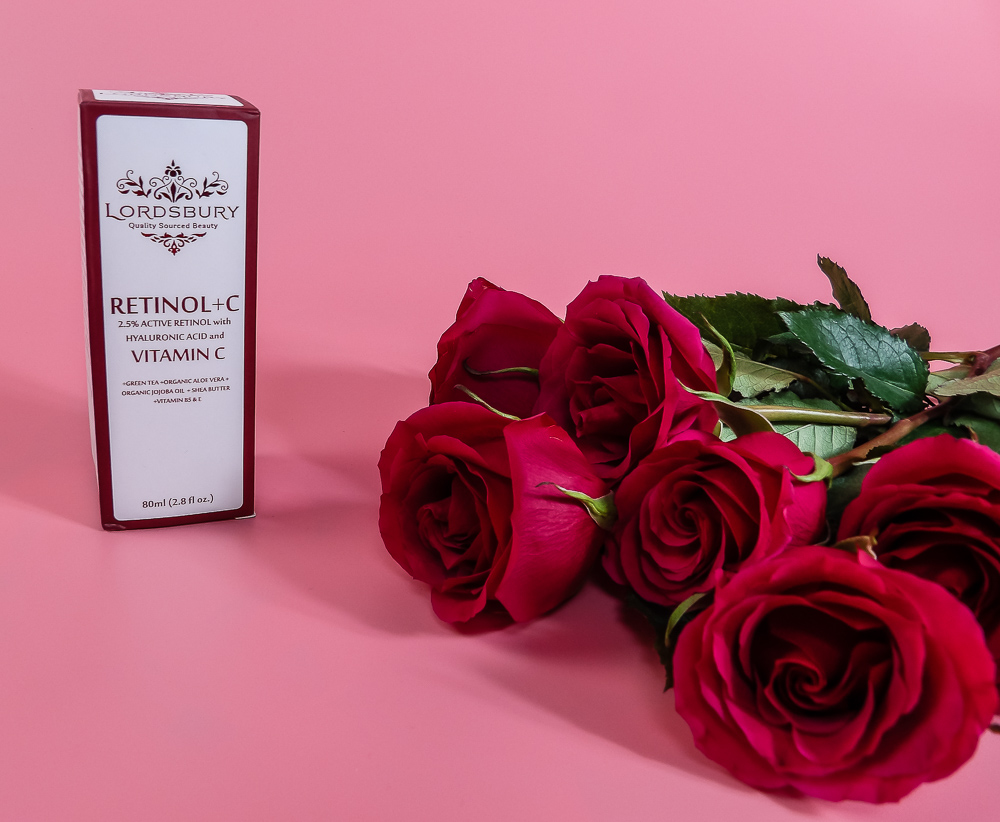
Style Chicks received compensation for our time and effort to test this product. However, our experience with the product and the opinions expressed in this review are 100% ours.
Tonia Kevins says
I knew that Lordsbury is working great for my skin but I never knew why it worked so great! Thanks for explaining!
Tonia
Sierra Scriven says
Hi!
I’ve been using prescription Retin-A for years but am just now learning about buffering, which would save me a lot of “red” days! This formula looks promising, thanks for the heads up!
Style Chicks says
It’s a really great product, and it is so cost-effective – it is likely less expensive than your Retin-A copay.
-The SC Team
Hillary Low says
I learned about Lordsbury Retinol+C here and LOVE it. Thanks for explaining why it works so well!
Hill
Style Chicks says
Our pleasure!!!!!!!!!!
-The SC Team
Jessa Garnet says
I should really start a retinol. This looks really good.
Do you have to use SPF with it? I read that you should use SPF if you use retin-a
Jessa
Style Chicks says
Hi Jessa!
We are sticklers for daily use of SPF, 365 days a year, rain or shine. It’s the best thing you can do for your skin, regardless of the rest of your skincare routine. In fact, if you only do one thing for your skin, it should be using SPF!
(steps off soapbox)
That said, what you read is correct – you should definitely use Broad Spectrum SPF if you are using any product that makes you more sensitive to the sun, and retinols fall into that category.
Great question – thanks for asking!
-The SC Team
Gwendolyn Hayley says
You ladies always have the best skincare articles! Lordsbury sounds like a great brand. Do they have other products? I just see the one on Amazon.
Gwen
Style Chicks says
Hi Gwen!
Lordsbury just makes the one product, but what makes it an even more amazing product is that it works everywhere – one product for all your needs! Face, throat, chest, hands, it is even gentle enough that I use it around my eyes!
Thanks for the comment!
-The SC Team
Brynne Michaelson says
So cool that it has green tea in it. I love soothing ingredients in skincare!
Marinda Davidson says
There is some really good science in this formula! Thanks for the breakdown!
Kaylynn Ingham says
I love that this has organic Shea Butter. Organic vs non organic makes such a huge difference in efficacy
Kay
Ariana Brice says
Read your other articles on this cream too – I love that you can use it twice a day!
Erin Rennell says
I use a few of these ingredients separately from The Ordinary line, but this has so many more ingredients at a better price than the different formulas I’m buying!
Mya Bannister says
This is the perfect formula! Wow!
Penelope Christinsen says
Wow this stuff covers all the bases! I saw it on Black Friday and wondered about it. You’ve convinced me to give it a shot!
P
Coreen Spear says
This sounds like the perfect retinol for winter – soothing and moisturizing. All year long, really, but my skin gets sooooooooo dry in winter.
Delia Isaacson says
You guys really do find the best in skincare! Reading through the rest of your articles on Lordsbury now – this stuff sounds amazing. You’ve convinced me to pick it up next week!